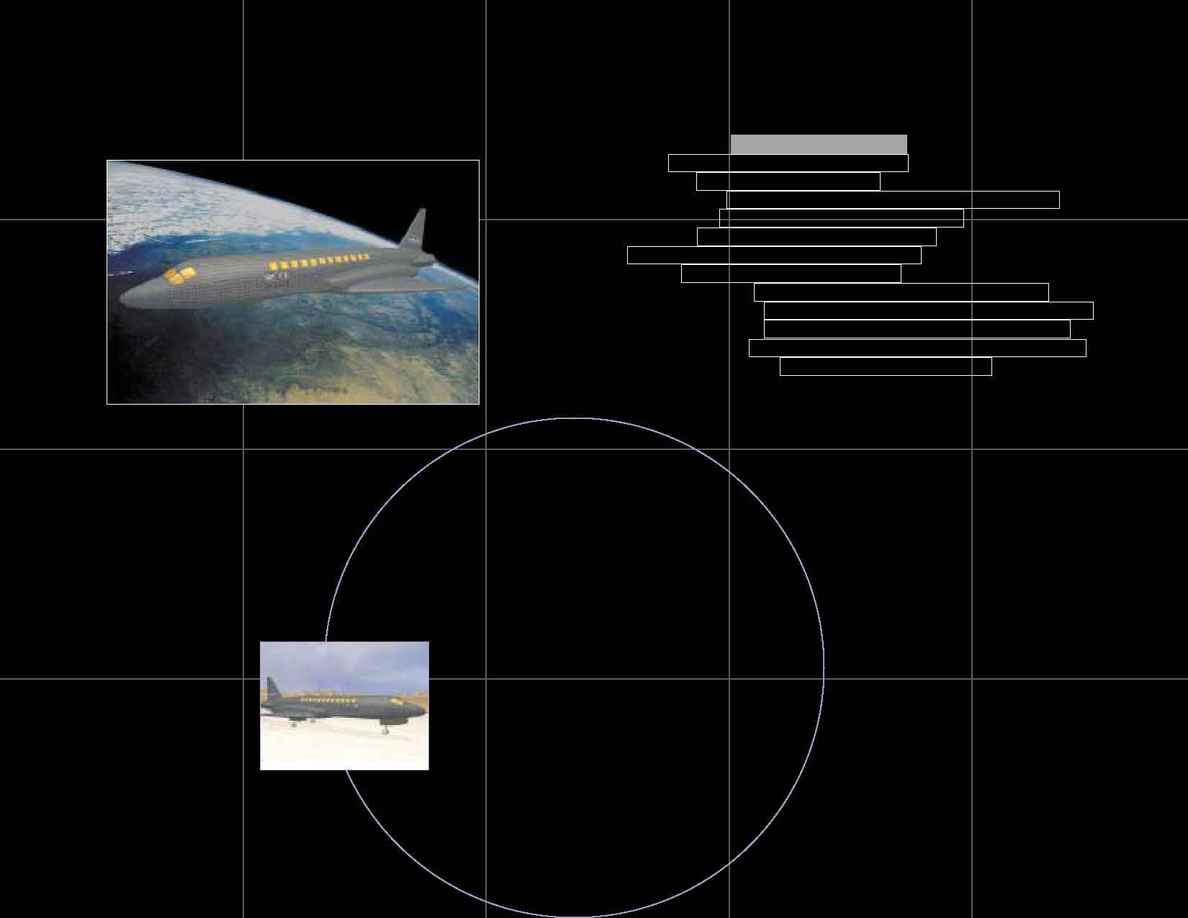
P I O N E E R P A T H F I N D E R
P I O N E E R
P A T H F I N D E R
The Pioneer Rocketplane Pathfinder reusable launch vehicle (RLV) is designed to utilize a unique
but proven process to gain access to space. Pathfinder uses aerial propellant transfer to receive
liquid oxygen, which is used by the rocket engines as an oxidizer. By transferring the heavy
liquid oxygen in flight this RLV is able to take off from a commercial runway under conventional
jet engine power and rendezvous in flight with an aerial tanker.
Passengers: Up to 23
Flight Crew: 2-5
Max Speed: Mach 15* / 10,000 mph (16,100 kph)
Max Altitude: 83 miles (133 km)
Minutes of Zero Gravity: 5
Wing Span: 47 ft (14 m)
Length: 86 ft. (26 m)
Gross Lift-off Weight: 240,000 lbs. (109,091 kg)
Propulsion System: For atmospheric flight the Pathfinder
uses two General Electric F404 jet engines. A single
Energomash RD-120 rocket engine is the main rocket
propulsion system for the Pathfinder.
*Mach calculated at sea level.
A true rocket plane.
RLV Specs
The Pathfinder flight profile: Pathfinder takes off from a conventional commercial runway under jet
engine power and rendezvous with an aerial tanker for transfer of liquid oxygen. Following aerial
propellant transfer Pathfinder undocks from the tanker and fires its single rocket engine. The rocket
engine burns to the depletion of the liquid oxygen propellant at an altitude of 73 miles (117 km)
and coasts through 83 miles (133 km). Following main engine cutoff the passengers experience
approximately five minutes of in-cabin zero gravity. After re-entry, the RLV's jet engines are
reactivated as Pathfinder enters the stratosphere. Under jet engine power and with the similar
control as a conventional jet aircraft, Pathfinder lands at the same airport that it departed from.
